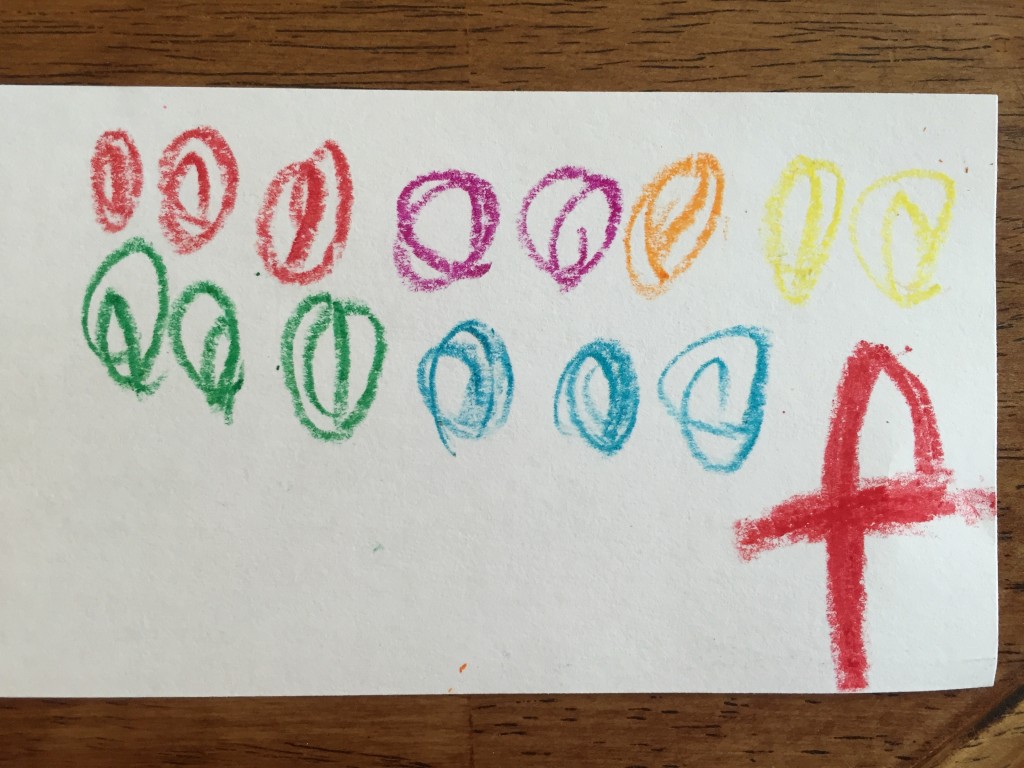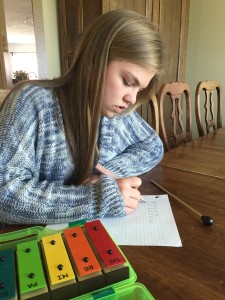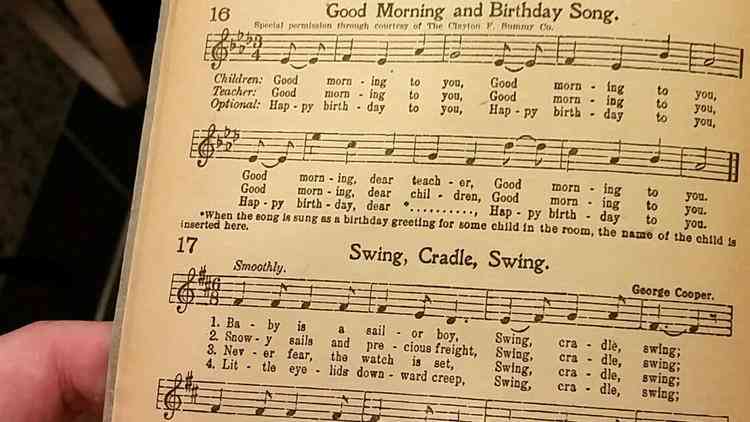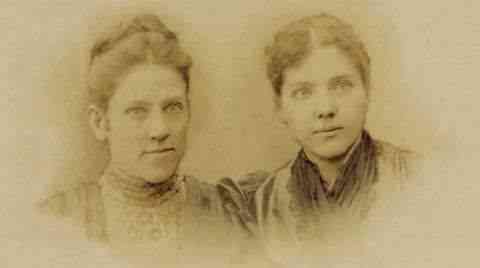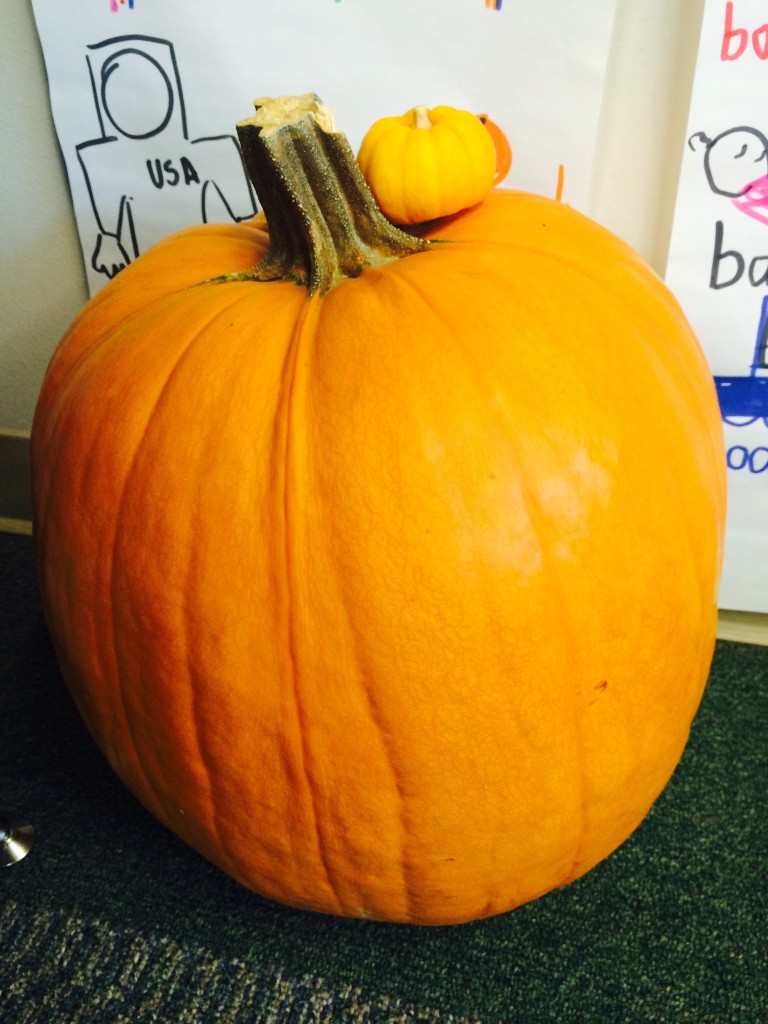 Today in Mrs. S’s class I introduced the concept of dynamics. We started out as usual, singing our DM Theme Song, but I sang each phrase of the song either loud or soft. After we sang it, I asked the children if they noticed anything different about the way I sang the song. Some of them noticed. I confirmed that I had sung some parts louder and other parts softer.I showed them two pumpkins I had brought: one very large pumpkin and one very tiny pumpkin. I asked them how large a pumpkin seed is. (I forgot to bring my pumpking seeds!) They showed me with their hands and I drew one up on the board. I explained that pumpkins grow from small seeds. Music can grow from soft to loud also. I told them we were going to learn “The Growing Pumpkin Game.”
Today in Mrs. S’s class I introduced the concept of dynamics. We started out as usual, singing our DM Theme Song, but I sang each phrase of the song either loud or soft. After we sang it, I asked the children if they noticed anything different about the way I sang the song. Some of them noticed. I confirmed that I had sung some parts louder and other parts softer.I showed them two pumpkins I had brought: one very large pumpkin and one very tiny pumpkin. I asked them how large a pumpkin seed is. (I forgot to bring my pumpking seeds!) They showed me with their hands and I drew one up on the board. I explained that pumpkins grow from small seeds. Music can grow from soft to loud also. I told them we were going to learn “The Growing Pumpkin Game.”
I told them I would show them the game first, so they could just watch this time to learn how to do it. I knelt down on the floor and put my head down in front of my knees and my arms curled up under me. I told them I was making myself tiny like a seed. I told them they needed to be silent to hear what I would say. I whispered, “pianissimo.” Then I put my bent arms up on my legs and said, a little louder, “piano.” Then I sat up while still kneeling and said, a little louder, “mezzo piano.” Then I knelt up on my knees and said, a little louder still, “mezzo forte.” Then I stood up and said louder still, “forte.” Then I jumped up and made my arms go up and down to the sides like a water fountain, calling out the loudest of all, “fortissimo!”
Then I knelt back down and started over, this time with the children doing it with me. We did this two or three times.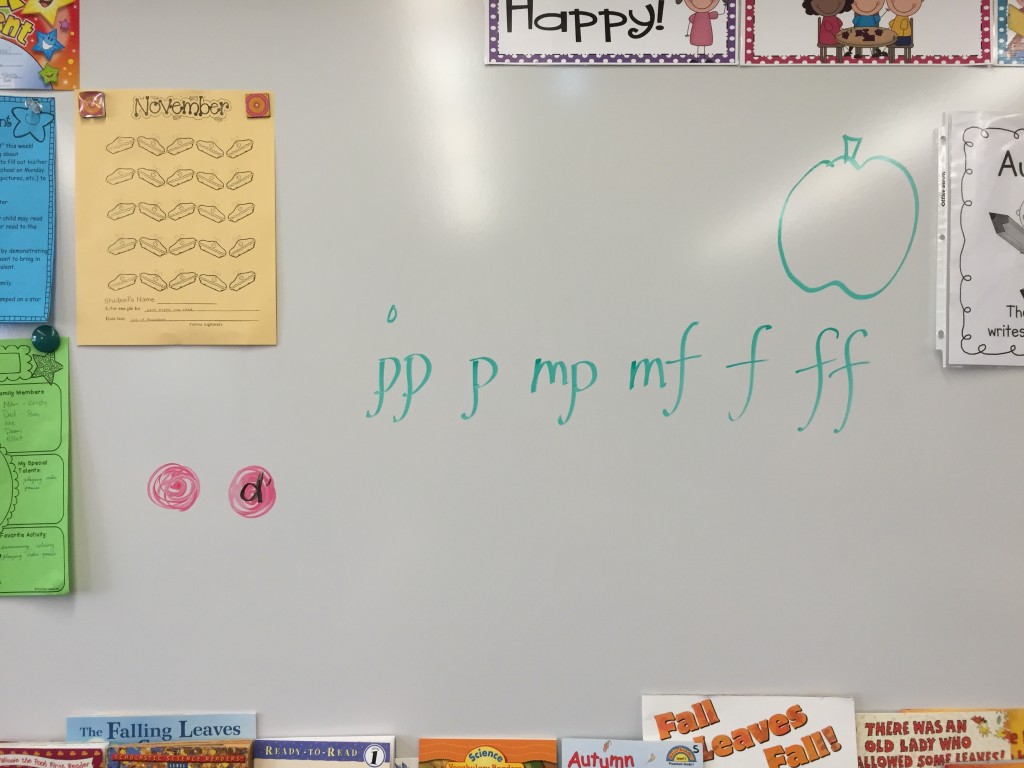
I got up and went to the whiteboard, where I wrote down the abbreviations for the six dynamic markings I just taught them: pp p mp mf f ff. I opened up a songbook and showed them a piece of music. (I meant to show them one with a dynamic marking in the music, but I grabbed the wrong piece!) I told them that if someone writes a song and wants it played loud, then they write a forte or f under the notes. If they want it played piano, they write a p. I can’t remember if I pointed out that when we tell someone to play or sing a song loudly or softly, this is called “dynamics” in music. Each of those abbreviations is a dynamic marking. (I also told them that in their songs, if they choose a “Baby do” for one of their notes, they need to show it by putting an apostrophe next to a d on their red dot, so that someone playing it will know it is not “Daddy do.“)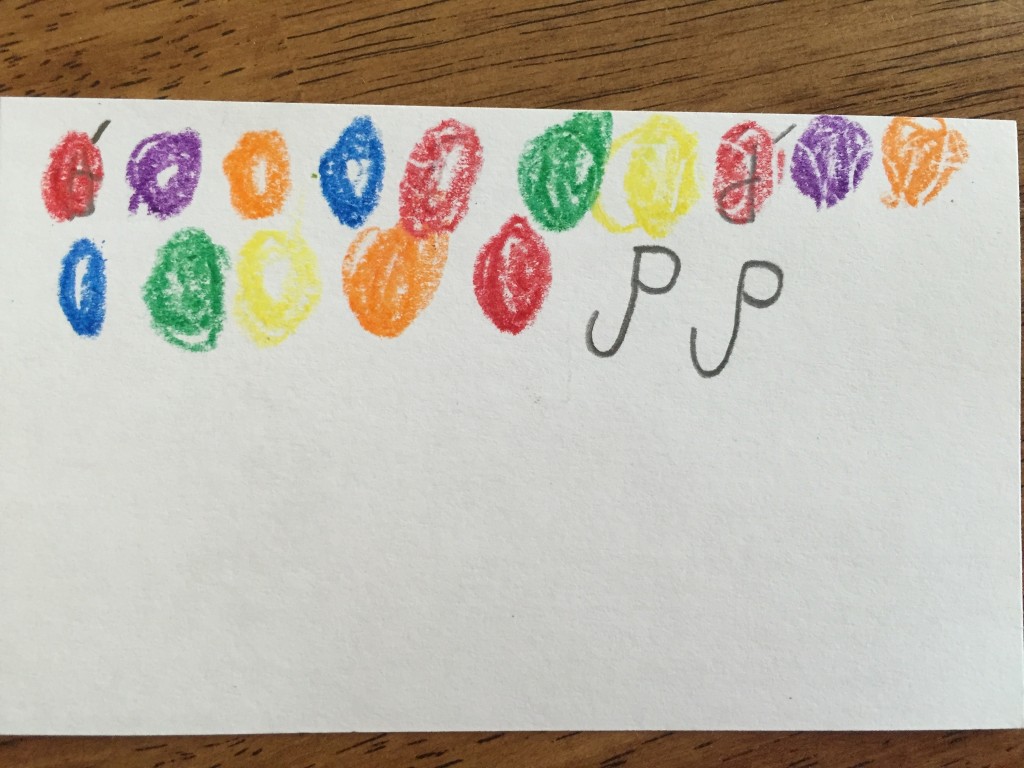
We sang “Over the River and Through the Woods” (I can’t remember if I told them to sing it f or p like I had intended!) to review and then went to get our bells.
I had them bring their bells over to their seats. I handed out their songs (the ones they wrote on 3″x5″ cards last week) and asked them to choose a dynamic marking and write it below with a crayon.
We warmed up by practicing an ascending and descending scale on the bells. I modeled it for them first: d r m f s l t d’ d’ t l s f m r d. Then I cued them, “1-2-ready-play.” They played with me (sort of) as I very slowly led them in their scale. I asked the teacher after, “Did we sound like one voice or 30 voices?” She said “Maybe 15.” So I encouraged them to try to play right with me, at exactly the same time, not any faster or any slower. We played the scale again. After each scale, I told them, “Mallet on your head” or “Mallet on your ear” or “Mallet on your nose,” so they didn’t start playing while I was talking. I pointed out that I heard some children playing each note several times, and that I wanted them to only play one note right with me. We played it a third time.
Then I had them play their own song once, then hand it to their neighbor and have them play their song, especially playing it with the dynamic marking. Then we had performances. I had two children play their neighbor’s song. It was fun to see which dynamic marking they had chosen, as some wrote “ff” and others”pp.” (I had them fix any red dots to distinguish if it was low do/Daddy do or high do/Baby do.) It challenged them to figure out how to play their bells louder or softer.
We had so much fun and ran out of time as usual! We closed up our bells, collected the song cards, and sang our goodbye song. I put the bells away myself because I had gone over time.
Note: My apologies that I don’t remember who taught me the dynamics “game” that I have called “The Growing Pumpkin Game.” It was years ago in a Suzuki Music workshop class with my children. Many thanks to whomever it was who taught me this “game” that the children love so well and helps them understand dynamic markings so quickly!
